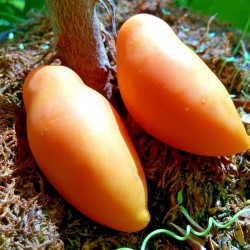Menu
-
MenuZpět
- Home
-
Kategorie
-
-
Kategorie
-
Zeleninová semínka
-
Odrůdy podle země
- Odrůdy z Arménie
- Odrůdy od BiH
- Odrůdy z Chorvatska
- Odrůdy z Francie
- Odrůdy z Německa
- Varieties from Greece
- Varieties from Hungary
- Odrůdy z Indie
- Varieties from Italy
- Odrůdy z Japonska
- Odrůdy ze Severní Makedonie
- Varieties from Peru
- Varieties from Russia
- Varieties from Serbia
- Odrůdy ze Slovinska
- Varieties from Spain
- Varieties from Thailand
- Odrůdy z Turecka
- Varieties from USA
- Semena rajčat
- Semena kukuřice
- Tykev rodina
- Rodina fazole
- Semena okurky
- Semena papriky
- Rodina mrkve
- Cibulová rodina
- Salátová semínka
- Rodina brambor
- Rodina zelí
- Semena ředkvičky
- Rodina z červené řepy
- Semena melounu
- Melounová semínka
- Semena květáku
- Slunečnicová rodina
-
Odrůdy podle země
- Ovocná semínka
- Chili semínka
- Semena léčivých bylin
- Semena horolezeckých rostlin
- Stromy - keř - semena
- Palmová semínka
- Semena okrasných trav
- Semena tabáku
-
Zeleninová semínka
-
-
-
-
- NOVÉ PRODUKTY
- Dodání - platba
- Vytvořit účet
- FAQ
Seznam produktů značky Seeds Gallery
Seeds produced by Seeds Gallery
Seeds produced by Seeds Gallery
Počet produktů: 408
Seřadit podle:
Zobrazení 376-390 z 408 položek
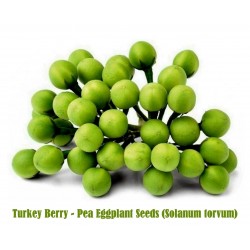
Turkey Berry - Pea Eggplant...
Cena
1,65 €
(SKU: VT 168)
Seeds Gallery EU,
5/
5
<h2><strong>Turkey Berry - Pea Eggplant Seeds (Solanum torvum)</strong></h2>
<h2 style="font-family: 'Helvetica Neue', Helvetica, Arial, sans-serif; color: #333333;"><span style="color: #ff0000;"><strong>Price for Package of 5 оr 10 seeds.</strong></span></h2>
<p>Solanum torvum is a bushy, erect and spiny perennial plant used horticulturally as a rootstock for eggplant. Grafted plants are very vigorous and tolerate diseases affecting the root system, thus allowing the crop to continue for a second year.</p>
<p>It is also known as turkey berry, prickly nightshade, shoo-shoo bush, wild eggplant, pea eggplant, pea aubergine, susumber ( Jamaica), boo, terongan, tekokak, berenjena cimarrona, berenjena de gallina, berenjena silvestre, tabacón, pendejera, tomatillo, bâtard balengène, zamorette, friega-platos, kudanekayi (Kannada: ಕುದನೆಕಾಯಿ), sundaikkai (Tamil: சுண்டைக்காய்),[3] (Malayalam: ചുണ്ട ), thibbatu (Sinhala), makhuea phuang (Thai: มะเขือพวง), suzume nasu (Japan: 雀茄子), jurubeba (Brazilian Portuguese), and many other names (Howard 1989, Little and others 1974, Pacific Island Ecosystems at Risk 2001).</p>
<p>The plant is usually 2 or 3 m in height and 2 cm in basal diameter, but may reach 5m in height and 8 cm in basal diameter. The shrub usually has a single stem at ground level, but it may branch on the lower stem. The stem bark is gray and nearly smooth with raised lenticels. The inner bark has a green layer over an ivory color (Little and others 1974). The plants examined by the author, growing on firm soil, had weak taproots and well-developed laterals. The roots are white. Foliage is confined to the growing twigs.</p>
<p>The twigs are gray-green and covered with star-shaped hairs. The spines are short and slightly curved and vary from thick throughout the plant, including the leaf midrib, to entirely absent. The leaves are opposite or one per node, broadly ovate with the border entire or deeply lobed. The petioles are 1 to 6 cm long and the blades are 7 to 23 by 5 to 18 cm and covered with short hairs. The flowers are white, tubular with 5 pointed lobes, and grouped in corymbiform cymes. They are shed soon after opening.</p>
<p>The fruits are berries that grow in clusters of tiny green spheres (ca. 1 cm in diameter) that look like green peas. They become yellow when fully ripe. They are thin-fleshed and contain numerous flat, round, brown seeds (Howard 1989, Liogier 1995, Little and others 1974).</p>
<p><strong>Range</strong></p>
<p>Turkey berry apparently is native from Florida and southern Alabama through the West Indies and from Mexico through Central America and South America through Brazil (Little and others 1974). Because of its rapid spread as a weed in disturbed lands, it is difficult to tell which populations are native and which are introduced. Turkey berry has been introduced and naturalized throughout tropical Africa, Asia, Australia, and the Pacific Islands including Hawaii, Guam, and American Samoa (Pacific Island Ecosystems at Risk 2001). In Jamaica this berry is called susumba, or gully beans, and is usually cooked in a dish along with saltfish and ackee. It is believed to be full of iron (it does have a strong iron like taste when eaten) and is consumed when one is low in iron.</p>
<p><strong>Ecology</strong></p>
<p>In Puerto Rico, turkey berry grows in upland sites that receive from about 1000 to 4000 mm of annual precipitation. It also grows in riparian zones in drier areas. Turkey berry grows on all types of moist, fertile soil at elevations from near sea level to almost 1,000 m in Puerto Rico (Little and others 1974) and 2,000 m in Papua New Guinea (Pacific Island Ecosystems at Risk 2001). Given an equal start after disturbance, turkey berry quickly overtops most herbs, grasses, and other shrubs. It grows best in full sunlight and does well in light shade or shade for part of the day, but cannot survive under a closed forest canopy. Turkey berry single plants, groups, and thickets are most frequently seen on roadsides, vacant lots, brushy pastures, recently abandoned farmland, landslides, and river banks.</p>
<p><strong>Reproduction</strong></p>
<p>Flowering and fruiting is continuous after the shrubs reach about 1 to 1.5 m in height. Ripe fruits collected in Puerto Rico averaged 1.308 + 0.052 g. Air dry seeds from these fruits weighed an average of 0.00935 g or 1,070,000 seeds/kg. These seeds were sown on commercial potting mix and 60 percent germinated between 13 and 106 days following sowing. The seedlings are common in recently disturbed ground. Frugivorous birds eat the fruits and spread the seeds (Pacific Island Ecosystems at Risk 2001). Turkey berry can be propagated vegetatively by placing branch cuttings, with or without leaves, in a mist chamber for one month (Badola and others 1993).</p>
<p><strong>Growth and management</strong></p>
<p>Turkey berry grows about 0.75 to 1.5 m in height per year. The species is not long-lived; most plants live about 2 years. Physical control of the shrub may be done by grubbing out the plants; lopping will not kill them. They can be killed by translocated herbicides applied to the leaves or the cut stumps (Pacific Island Ecosystems at Risk 2001).</p>
<p><strong>Cuisine</strong></p>
<p>The green fresh fruits are edible and used in Thai cuisine, as an ingredient in certain Thai curries or raw in certain Thai chili pastes (nam phrik).[4][5] They are also used in Lao cuisine (Royal Horticultural Society 2001) and Jamaican cuisine.[6] The fruits are incorporated into soups and sauces in the Côte d'Ivoire (Herzog and Gautier-Béguin 2001).</p>
<p>In Tamil Nadu, India, the fruit is consumed directly, or as cooked food like Sundaikkai Sambar, Sundaikkai Poriyal, Sundaikkai Aviyal & Sundaikkai Pulikulambu. After soaking in curd and drying, the final product is fried in oil as Sundaikkai vattral (available in all Tamil Nadu supermarkets), it is famous all around in Tamil Nadu. In siddha medicine one of the traditional systems of India Sundaivattral Choornam is used to improve digestion.</p>
<p><strong>Haitian Mythology</strong></p>
<p>This fruit is reportedly used in Haitian voodoo rituals.</p>
<p><strong>Chemistry</strong></p>
<p>Turkey berry contains a number of potentially pharmacologically active chemicals including the sapogenin steroid chlorogenin.</p>
<p>Aqueous extracts of turkey berry are lethal to mice by depressing the number of erythrocytes, leukocytes and platelets in their blood (Tapia and others 1996). A related chemical, cholecalciferol, is the active ingredient in a number of commercial rodenticides.</p>
<p>Extracts of the plant are reported to be useful in the treatment of hyperactivity, colds and cough, pimples, skin diseases, and leprosy.</p>
<p>Methyl caffeate, extracted from the fruit of S. torvum, shows an antidiabetic effect in streptozotocin-induced diabetic rats.</p>
<p>Cholinergic poisoning has been reported as a result of the consumption of Solanum torvum berries prepared in Jamaican dishes.</p>
<p> </p>
VT 168 (5 S)

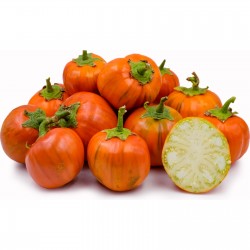
Turkish Orange Eggplant...
Cena
1,95 €
(SKU: VE 96)
Seeds Gallery EU,
5/
5
<h2><strong>Turkish Orange Eggplant Seeds (Solanum aethiopicum)</strong></h2>
<h2><span style="color: #ff0000;"><strong>Price for Package of 10 seeds.</strong></span></h2>
<p><i><b>Solanum aethiopicum</b></i>, the<span> </span><b>bitter tomato</b>,<span> </span><b>Ethiopian eggplant</b>, or<span> </span><b>nakati</b>, is a fruiting<span> </span>plant<span> </span>of the<span> </span>genus<span> </span><i>Solanum</i><span> </span>mainly found in<span> </span>Asia<span> </span>and Tropical<span> </span>Africa. It is also known as<span> </span><b>Ethiopian nightshade</b>,<span> </span><b>garden eggs</b>, and<span> </span><b>mock tomato</b>. It is a popular vegetable in north-east India, and is known as<span> </span><b>khamen akhaba</b><span> </span>in Manipuri and<span> </span><i>samtawk</i><span> </span>in<span> </span>Mizo. They are called<span> </span><i>Titay bii</i><span> </span>or simply<span> </span><i>bii</i><span> </span>in Darjeeling, Sikkim and Nepal and are relished with meat, particularly pork. These names are a result of its varied morphology, with ripe fruit often looking like a cross between an<span> </span>eggplant<span> </span>and a<span> </span>tomato, which are also from<span> </span><i>Solanum</i>. In fact, the Ethiopian eggplant was so much confused with the ordinary eggplant that this was considered by some a<span> </span>variety<span> </span><i>violaceum</i><span> </span>of<span> </span><i>S. aethiopicum</i>.</p>
<p>Ethiopian eggplant may have originated from the domestication of<span> </span><i>Solanum anguivi</i>. The<span> </span><b>scarlet eggplant</b>, also known as Gilo or<span> </span><i>jiló</i>, was long held to be a distinct species (<i>S. gilo</i>) but is nowadays generally considered to be a<span> </span>cultivar<span> </span>group of<span> </span><i>S. aethiopicum</i>.</p>
<h2><span class="mw-headline" id="Uses">Uses</span></h2>
<p>The leaves of<span> </span><i>Solanum aethiopicum</i><span> </span>are eaten as a<span> </span>leaf vegetable<span> </span>and are actually more nutritious than the<span> </span>fruit.</p>
<p>The highly variable fruit of the plant is eaten both raw and cooked and is becoming more popular as a cultivated crop. These fruits are usually harvested while still green, before the skin becomes thick. The bitterness depends on the levels of<span> </span>saponin<span> </span>it contains, some with a sweet flavor and others very bitter. When the berries mature, they turn bright red because of high<span> </span>carotene<span> </span>content.</p>
<p><i>Solanum aethiopicum</i><span> </span>is used as an ornamental in Asia.</p>
<p>In Nigeria, Igbo people use it as a substitute for kolanut especially for those who do not want to chew kolanut. In which case it is used to welcome guests at home or before resumption of a traditional ceremony.</p>
<p>Garden egg as it is commonly known in Nigeria is sometimes used to make a tomato based sauce which can be used to eat yam</p>
<h3><span class="mw-headline" id="Cultivation">Cultivation</span></h3>
<div class="thumb tright">
<div class="thumbinner"><img alt="" src="https://upload.wikimedia.org/wikipedia/commons/thumb/4/4c/Solanum_aethiopicum_MS_2264.JPG/220px-Solanum_aethiopicum_MS_2264.JPG" width="220" height="147" class="thumbimage" />
<div class="thumbcaption">
<div class="magnify"></div>
Fruit of<span> </span><i>S. aethiopicum</i><span> </span>from SW Burkina Faso</div>
</div>
</div>
<p>Currently there is a large movement towards increased cultivation of<span> </span><i>Solanum aethiopicum</i><span> </span>in West Africa. It grows all year long and can produce high fruit yields. However, low germination rates are an obstacle to wider cultivation.</p>
<div class="thumb tright">
<div class="thumbinner"><img alt="" src="https://upload.wikimedia.org/wikipedia/commons/thumb/e/e8/Bitter_tomato_raw.jpg/220px-Bitter_tomato_raw.jpg" width="220" height="293" class="thumbimage" />
<div class="thumbcaption">
<div class="magnify"></div>
Fruits of bitter tomato ready for cooking in northeast India</div>
</div>
</div>
<p>The only place where<span> </span><i>S. aethiopicum</i><span> </span>is grown to a significant extent in Europe lies in South Italy, to be precise in<span> </span>Rotonda<span> </span>in the<span> </span>Basilicata, where this plant is of some commercial importance. Probably it was introduced by veterans returning from East Africa after the colonial war in the late 19th century.</p>
<div class="thumb tright">
<div class="thumbinner"><img alt="" src="https://upload.wikimedia.org/wikipedia/commons/thumb/f/f3/Chicken-Bitter-Tomato.jpg/220px-Chicken-Bitter-Tomato.jpg" width="220" height="215" class="thumbimage" />
<div class="thumbcaption">
<div class="magnify"></div>
Chicken cooked with bitter tomato in northeast India</div>
</div>
</div>
<h3><span class="mw-headline" id="Selected_cultivars">Selected cultivars</span></h3>
<ul>
<li>'Turkish Orange' or 'Turkish Italian'</li>
</ul>
<dl>
<dd>The fruits of this variety are about two inches in diameter and turn bright orange-red when ripe, although they are usually eaten when still green. The sweet taste is often used in<span> </span>Thai curry. It can produce fruit within just 75 days after planting.</dd>
</dl>
<ul>
<li>'Sweet Red'</li>
</ul>
<dl>
<dd>These striped fruits, just 1 inch in diameter, have a strong but non-bitter flavor. The plant is thornless and grows up to 3 feet tall and can produce fruit 125 days after planting.</dd>
</dl>
<ul>
<li>'Small Ruffled Red', 'Red Ruffles', or 'Hmong Red'</li>
</ul>
<dl>
<dd>The two-inch berries of the 'Hmong Red' have deep creases and a bitter flavor used in Southeast Asian cooking. It can produce fruit 100 days after planting.</dd>
</dl>
VE 96 (10 S)


Odrůda ze Srbska
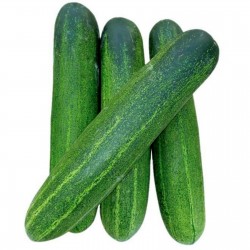
Typhoon Cucumber Seeds
Cena
1,75 €
(SKU: PK 28)
Seeds Gallery EU,
5/
5
<!DOCTYPE html>
<html>
<head>
<meta http-equiv="Content-Type" content="text/html; charset=UTF-8" />
</head>
<body>
<h2><strong>Typhoon Cucumber Seeds</strong></h2>
<h2><span style="color: #ff0000;"><strong>Price for Package of 30-40 (1g) seeds.</strong></span></h2>
<p>Typhoon is one of the favorite varieties of cucumbers for salads in Serbia. Typhoon salad cucumber has a vegetation length from sprouting to harvesting the firstfruits for about 45 days.</p>
<p>The fruit is elongated and cylindrical in shape, smooth, dark green in color with light stripes, about 17 to 20 cm long and about 4 cm wide.</p>
<p>The average weight of the fruit is 180-200 g.</p>
<p>Plants are tolerant to late blight.</p>
</body>
</html>
PK 28 (1g)


Odrůda ze Spojených států amerických
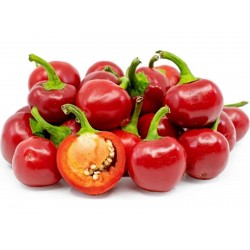
Velká červená třešňová...
Cena
4,65 €
(SKU: C 46)
Seeds Gallery EU,
5/
5
<h2><strong>Velká červená třešňová semínka chilli</strong></h2>
<h2><span style="color: #ff0000;"><strong>Cena za Balení 10 - 50 semen.</strong></span></h2>
Paprika Large Red Cherry je velmi dekorativní odrůda, velké plody (o hmotnosti 20 až 50 gramů), téměř správně kulaté a velmi červené barvy. Tato odrůda plodí ve velkém množství. Plody dozrávají po 60 až 75 dnech. Patří mezi středně pálivé chilli papričky (asi 5000-35000 HSU).<br><br>Výjimečná odrůda k sušení a použití jako mletá paprika.<br><br>Dobře roste na otevřeném poli, ve skleníku i v květináči na balkóně nebo na jakémkoli jiném místě.<br><br>Capsicum annuum<br>Země původu: USA<script src="//cdn.public.n1ed.com/G3OMDFLT/widgets.js"></script>
C 46 (50 S)


Obří rostlina (s obřími plody)

Odrůda ze Srbska
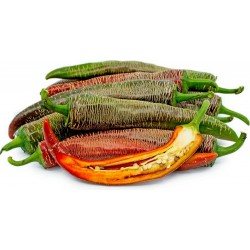
Vezanka Chili Seeds Old...
Cena
4,40 €
(SKU: C 57)
Seeds Gallery EU,
5/
5
<h2 class=""><strong>"Vezanka" Chili Seeds Old Serbian variety</strong></h2>
<h2><span style="color: #ff0000;"><strong>Price for Package of 10 or 50 seeds.</strong></span></h2>
<div><span><strong><em>Vezanka, Vezena</em> </strong>peppers are medium to large in size and are long, slender, and taper to a point at the non-stem end, averaging one centimeter in diameter near the stem cap and 15-30 centimeters in length. The pods have prominent, horizontal tan lines, also known as corking, and these lines create a leathery texture. The skin matures from green to red and is very thin, moist, and slightly chewy. Inside the pod, there is a hollow seed cavity housing many round, pale white to cream-colored seeds that are slippery, firm, and crunchy. Vezena peppers have a mild to medium heat, are very aromatic, and are initially sweet with a nutty finish. </span>
<h2>Current Facts</h2>
<span>Vezena peppers, botanically classified as Capsicum annuum, are a rare heirloom variety native to Eastern Europe that grows on small plants reaching just under one meter in height. Also known as the Rezha Macedonian pepper, Vezeni Piperki, Vezenka, Vezanka, and Vezhenka, the name Vezena Piperka often translates to “engraved” or “embroidered,” a descriptor used to identify the pepper’s unique corked skin. Vezena peppers vary considerably in heat and average between 1,200-5,000 units on the Scoville Heat Scale, with some peppers carrying less capsaicin having a milder taste and some peppers carrying stronger heat similar to jalapeno. Vezena peppers are commonly used as decoration and are also dried and ground for use in spices such as paprika. </span><br>
<h2>Nutritional Value</h2>
<span>Vezena peppers contain vitamins C, A, K, and B6, potassium, manganese, iron, magnesium, copper, and fiber. </span><br>
<h2>Applications</h2>
<span>Vezena peppers are best suited for both raw and cooked applications such as grilling and roasting. They can be chopped, diced, and incorporated into salsas or they can be roasted or boiled and used in marmalades and spreads. Vezena peppers are also commonly dried and hung for extended use or ground into paprika and chile salt. They can also be pickled or smoked for an added flavor. Vezena peppers pair well with savory foods, omelets, onion, garlic, sour cream, yogurt, meats such as poultry, pork, beef, and fish, creamy sauces, rice, potatoes, goulash, and boiled or steamed vegetables. They will keep up to one week when stored in a paper bag in the crisper drawer of the refrigerator. Vezena peppers have extremely thin skin and will dry out quickly if left in a dry, warm environment. </span><br>
<h2>Ethnic/Cultural Info</h2>
<span>In Serbia, Vezena peppers are often hung in large clusters around homes and are dried naturally in the autumn sun. The peppers are then left as decoration or are used for grinding into spices and powders. Vezena peppers have been grown in Serbia for hundreds of years, and the Serbian farmers search for the fruits with the most corking striations and collect the seeds as these peppers are considered the most valuable to grow. </span><br>
<h2>Geography/History</h2>
<span>Vezena peppers are native to Eastern Europe, specifically to Serbia. The exact origins are unknown, but these peppers are believed to have been cultivated for hundreds of years and are also found in Albania, Yugoslavia, and other select areas in the Balkan region.</span></div>
<script src="//cdn.public.n1ed.com/G3OMDFLT/widgets.js"></script>
C 57 (0.4g)

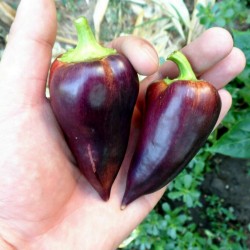
Violet Sparkle Sweet Pepper...
Cena
1,95 €
(SKU: P 40)
Seeds Gallery EU,
5/
5
<h2><strong>Violet Sparkle Sweet Pepper Seeds</strong></h2>
<h2><span style="color: #ff0000;"><strong>Price for Package of 5 seeds.</strong></span></h2>
<p>Pointed, wedge-shaped fruit is purple streaked with pale yellow. We originally received a few seeds of this variety from a Russian seed trader. Ripens red. Very lovely and delicious, sweet, crisp and thick-walled. One of the finest and prettiest peppers we have tried!</p>
<p>The flavor is excellent: sweet and aromatic, but you must wait until the peppers fully mature; they are very bland in immature stages. Wait until they are red and orange. I loved watching these peppers grow and their color change as they matured. They aren't just gorgeous in the purple stage they also turn yellow, orange, red with beautiful streaking and different color patterns when in-between colors.</p>
P 40 (5 S)

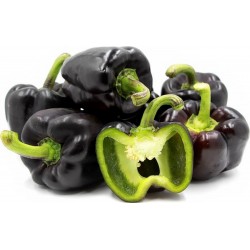
VIOLETTA Violet pepper Seeds
Cena
2,00 €
(SKU: PP 41)
Seeds Gallery EU,
5/
5
<div id="idTab1" class="rte">
<h2><strong><em><span style="text-decoration:underline;">VIOLETTA Violet pepper Seeds</span></em></strong></h2>
<h3><span style="color:#ff0000;"><strong>Price for Package of 8 seeds.</strong></span></h3>
<p>Violetta is a thick-fleshed block pepper coming in 3 different colors. These peppers weigh 250 g (0,6 lbs) each and start from violet, then turn green and then finally red. They appear riper, the sweeter. Violetta can be grown outdoors in warm areas or in greenhouses.</p>
<p>Capsicum annuum </p>
<p>Harvest: from August</p>
<p>Plant height:</p>
<p>outdoors: 70 cm (28 in)</p>
<p>indoors: more than 70 cm (28 in)</p>
</div>
PP 41 (8 S)


Odrůda z Ruska
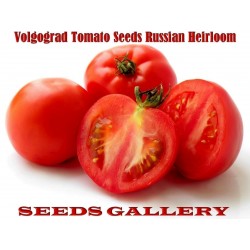
Volgograd Tomato Seeds...
Cena
2,05 €
(SKU: VT 140)
Seeds Gallery EU,
5/
5
<h2><strong>Volgograd Tomato Seeds Russian Heirloom</strong></h2>
<h2><span style="color:#f60101;"><strong>Price for Package of 10 seeds.</strong></span></h2>
<p><span>Other Names for Tomato 'Volgograd' Volgograd Winter, Volvograd. 'Volgograd' is a Tomato variety in the Solanum genus with a scientific name of Solanum lycopersicum. 'Volgograd' is considered a heirloom OP (open polliated) cultivar.</span></p>
<p><span>65 days, bush habit, regular leaf, 2-5 oz oblate or round red fruit which may have green shoulders. no cracking, the plants are loaded with fruit, very good ‘old-fashioned’ tomato taste, early tomato. good for cool season, or cool areas.</span></p>
<p><span>Dislikes heat.</span></p>
<p><span>This variety is an Fruit that typically grows as an Annual/Perennial, which is defined as a plant that can matures and completes its lifecycle over the course of one year or more.</span></p>
<p><span>Volgograd Tomato is normally fairly low maintenance and is normally quite easy to grow, as long as a level of basic care is provided throughout the year. Being aware of the basic soil, sun and water preferences will result in a happier and healthier plant.</span></p>
<p><strong><span>Growing Volgograd from seed</span></strong></p>
<p><span>Start seeds indoors six weeks before last frost date.</span></p>
<p><span>By our calculations, you should look at sowing Volgograd about 42 days before your last frost date.</span></p>
<p><strong><span>Transplanting Volgograd</span></strong></p>
<p><span>Plant to the first set of true leaves to promote strong root growth.</span></p>
<p><span>Ensure that temperatures are mild and all chance of frost has passed before planting out, as Volgograd is a tender plant.</span></p>
<p><strong><span>Tomato Volgograd Etymology</span></strong></p>
<p><span>Volgograd Winter, aka Volgograd is from the Volgograd region of Russia.</span></p>
<p><span>“Winter” sometimes tacked on to the name Volgograd, because it does best in cool weather.</span></p>
VT 140 (10 S)


Odrůda ze Spojených států amerických
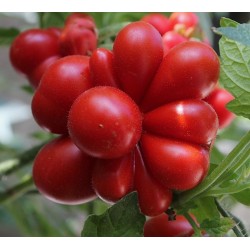
VOYAGE Tomato Seeds -...
Cena
1,95 €
(SKU: VT 86)
Seeds Gallery EU,
5/
5
<h2 class=""><strong>VOYAGE Tomato Seeds - Heirloom Variety</strong></h2>
<h2><span style="color: #ff0000;"><strong>Price for Package of 10 seeds.</strong></span></h2>
<p>Voyage Tomato is about as strange-looking tomato as you will find. The voyage tomato is an old Indian heirloom variety from Central America. It owes its name to the fact that, due to its unusual fruit form, it is ideally suited as food for travel. The name voyage comes from the idea that you can take it on a voyage and not have to eat the whole fruit. Pulling sections off and eating them as you need it.</p>
<p>Indeterminate, regular leaf, sprawling plants produce very unusually, 120 grams, red, lumpy and beautiful tomatoes.</p>
<p>Don't miss this fantastic strange variety for your garden this year...</p><script src="//cdn.public.n1ed.com/G3OMDFLT/widgets.js"></script>
VT 86


Odrůda ze Spojených států amerických
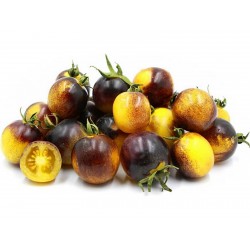
Wagner Blue Yellow Tomato...
Cena
1,65 €
(SKU: VT 13)
Seeds Gallery EU,
5/
5
<h2 class=""><strong>Wagner Blue Yellow Tomato Seeds</strong></h2>
<h2><span style="color: #ff0000;"><strong>Price for Package of 10, 20, 50 seeds.</strong></span></h2>
<p>This rare and beautiful tomato comes from the breeder Tom Wagner. Wagner Blue Yellow is a rare eye-catching tomato that is bright yellow, with dark blue marbled shoulders. They develop the blue-purple color as they grow, and the more sun that each tomato receives, the deeper that color becomes. Wagner Blue Yellow is a small salad-type tomato, though still larger than a cherry tomato at about <strong>5-6 cm in size and 50-90 grams of weight</strong>, and it has a mild, almost citrusy flavor with an appealing juicy texture. The fruits ripen after 60 to 70 days. Wagner Blue Yellow tomato plants can grow to an <strong>average of 180 cm</strong>, and they produce abundant yields of the round fruit throughout the season right up until frost.</p>
<p>Wagner Blue Yellow is not to be confused with the <a href="https://www.seeds-gallery.shop/en/home/blue-tomato-seeds-bosque-blue.html" title="Blue Tomato Seeds "Bosque Blue"" target="_blank" rel="noreferrer noopener"><strong>bosque blue tomato</strong></a>, which is a totally different variety that was released by the same farm in 2011. Wagner Blue Yellow has also been offered under the name Purple Yellow Light Bulb.</p>
<p>Wagner Blue Yellow tomatoes are great for fresh snacking, and their unique look makes them a great addition to salads. They can be used in fresh salsas...</p>
<p>Blue tomatoes like Wagner Blue Yellow are purposefully bred in the United States for the health benefits of their anthocyanin content. Until the 21st century, tomatoes grown in home gardens have had the beneficial pigment only in their leaves and stems, which are inedible, while only a few wild tomato species had anthocyanins in their fruit.</p><script src="//cdn.public.n1ed.com/G3OMDFLT/widgets.js"></script>
VT 13 (10 S)

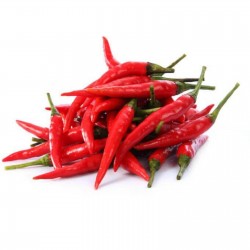
Wasp Hot Chili Seeds
Cena
2,45 €
(SKU: C 13 (0,3g))
Seeds Gallery EU,
5/
5
<h2 class=""><strong>Wasp Hot Chili Seeds</strong></h2>
<h2><span style="color: #ff0000;"><strong>Price for Package of 100+- seeds (0,3g).</strong></span></h2>
<p>Beautiful Chili, belongs to the group chili peppers with the high ingredient of capsaicin, whereby the fruits are extraordinary hot. It forms a short stalk, numerous branches, giving the plant a bushy appearance. The fruits are 3-4 cm long, green in the technological and red in the biological maturity. By regular harvest you can get 350-400 fruits. Due to the decorative appearance and large number of fruits, this plant is suitable for growing in pots on the terraces and balconies as a decorative plant.</p><script src="//cdn.public.n1ed.com/G3OMDFLT/widgets.js"></script>
C 13 (0,3g)

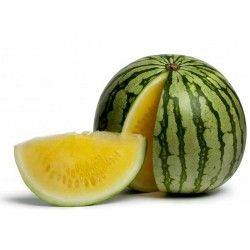
Watermelon Yellow Flesh...
Cena
1,85 €
(SKU: V 44)
Seeds Gallery EU,
5/
5
<h2>Watermelon Yellow Flesh Seeds - Super Sweet</h2>
<h2><span style="color: #ff0000;"><strong>Price for Package of <strong></strong></strong></span><span style="color: #ff0000;"><strong>5 or 10 </strong></span><span style="color: #ff0000;"><strong><strong></strong>seeds.</strong></span></h2>
<div>Watermelon Yellow Flesh is an unusual and very attractive watermelon.</div>
<div>This highly prized variety which has pure yellow flesh inside not only tastes great, it looks fabulous as well, the perfect complement to the standard red fleshed types such as Sugar Baby.</div>
<div>The flesh which is very sweet sometimes gives the impression of being bland but this is only because of the colour.</div>
<div>Watermelon Yellow Flesh produces firm, good quality and evenly shaped fruit on a bushy plant.</div>
<div>Heavy for their size the melons which can weigh anything from 3.5 - 5.5 kilos have a superb watermelon flavour and are highly rated in their native Poland.</div>
<div>Can be cultivated outdoors but gives best results in the British Isles when grown under protection.</div>
<div>
<table cellspacing="0" cellpadding="0" border="1">
<tbody>
<tr>
<td colspan="2" width="100%" valign="top">
<p><span style="color: #008000;"><strong>Sowing Instructions</strong></span></p>
</td>
</tr>
<tr>
<td valign="top" nowrap="nowrap">
<p><span style="color: #008000;"><strong>Propagation:</strong></span></p>
</td>
<td valign="top">
<p><span style="color: #008000;">Seeds</span></p>
</td>
</tr>
<tr>
<td valign="top" nowrap="nowrap">
<p><span style="color: #008000;"><strong>Pretreat:</strong></span></p>
</td>
<td valign="top">
<p><span style="color: #008000;">Damage the membranes of the seed. But not the sprouts! See Picture 3</span></p>
</td>
</tr>
<tr>
<td valign="top" nowrap="nowrap">
<p><span style="color: #008000;"><strong>Stratification:</strong></span></p>
</td>
<td valign="top">
<p><span style="color: #008000;">0</span></p>
</td>
</tr>
<tr>
<td valign="top" nowrap="nowrap">
<p><span style="color: #008000;"><strong>Sowing Time:</strong></span></p>
</td>
<td valign="top">
<p><span style="color: #008000;">all year round</span></p>
</td>
</tr>
<tr>
<td valign="top" nowrap="nowrap">
<p><span style="color: #008000;"><strong>Sowing Depth:</strong></span></p>
</td>
<td valign="top">
<p><span style="color: #008000;">0,5-1 cm</span></p>
</td>
</tr>
<tr>
<td valign="top" nowrap="nowrap">
<p><span style="color: #008000;"><strong>Sowing Mix:</strong></span></p>
</td>
<td valign="top">
<p><span style="color: #008000;">Coir or sowing mix + sand or perlite</span></p>
</td>
</tr>
<tr>
<td valign="top" nowrap="nowrap">
<p><span style="color: #008000;"><strong>Germination temperature:</strong></span></p>
</td>
<td valign="top">
<p><span style="color: #008000;">Opt. 38 ° C</span></p>
</td>
</tr>
<tr>
<td valign="top" nowrap="nowrap">
<p><span style="color: #008000;"><strong>Location:</strong></span></p>
</td>
<td valign="top">
<p><span style="color: #008000;">bright + keep constantly moist not wet</span></p>
</td>
</tr>
<tr>
<td valign="top" nowrap="nowrap">
<p><span style="color: #008000;"><strong>Germination Time:</strong></span></p>
</td>
<td valign="top">
<p><span style="color: #008000;">1-6 weeks</span></p>
</td>
</tr>
<tr>
<td valign="top" nowrap="nowrap">
<p><span style="color: #008000;"><strong>Watering:</strong></span></p>
</td>
<td valign="top">
<p><span style="color: #008000;">Water regularly during the growing season</span></p>
</td>
</tr>
<tr>
<td valign="top" nowrap="nowrap">
<p><span style="color: #008000;"><strong> </strong></span></p>
</td>
<td valign="top">
<p><br /><span style="color: #008000;"><em>Copyright © 2012 Seeds Gallery - Saatgut Galerie - Galerija semena. </em><em>All Rights Reserved.</em></span></p>
</td>
</tr>
</tbody>
</table>
</div>
V 44 (5 S)

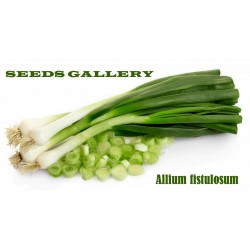
Welsh Onion Seeds (Allium...
Cena
1,55 €
(SKU: MHS 142)
Seeds Gallery EU,
5/
5
<h2><strong>Welsh Onion Seeds (Allium fistulosum)</strong></h2>
<h2><span style="color: #f80101;"><strong>Price for Package of 50 (0,13 g) seeds.</strong></span></h2>
<p><span>Long-term Welsh onion – one of ancient useful plants who can provide with valuable vitamin greens in the early spring. Its bright shoots are shown when even not all snow melted on a country site. In the people to it thought up many names: dudchaty, Chinese, sand, Tatar. Gentle, not really sharp "plumelets" are suitable for salads, garnishes, okroshka.</span></p>
<p><strong><span>Description and characteristic of Welsh onion</span></strong></p>
<p><span>Externally these onions are similar on everything the known napiform. But here the bulb underground at it is not formed. The basis of escape has only a small expansion called by botanists a false bulb. It is formed because the bases of sheet vaginas are thickened. The underground part of Welsh onion lives in the earth some years, and here the land part presented by leaves and tsvetonosa annually dies off during the autumn period. For Welsh onion strong branching, existence of a set of modified dudchaty leaves, hollow is characteristic inside. They accrue gradually, gaining the power. Depending on a grade, height of Welsh onion can be from 40 to 60 cm. For the second year of life Welsh onion throws out flower shooters, which length about 45 cm. Growing on one place, these onions well give greens for seven years. But it is best of all it does in the first four years. Then productivity considerably falls, it is connected with strong growth of underground part. Therefore in four years it should be seated in other places of a site. Surprisingly, but shoots of Welsh onion are capable to transfer spring frosts when stem of thermometer falls lower than zero by eight degrees. And here adult plants normally winter even if temperature will be-45 degrees. Therefore it is sowed often by Siberian summer residents. For normal development these onions need long light day. Optimum temperature for fast development from 18 to 22 degrees. Vitamin C in Welsh onion is approximately twice more, than in a turnip. There are in it phytoncides, essential oils, vitamins: carotene, B1, V2, PP, mineral salts of calcium, magnesium, phosphorus, iron, potassium.</span></p>
<p><span>The Chinese and Tibetan Aesculapians actively use Welsh onion as the antiseptic, all-strengthening means at treatment of gastrointestinal diseases, feverish states, skin illnesses. It is recommended to eat to hypertensive persons, it improves elastic properties of walls of capillaries.</span></p>
<p><strong><span>Site for Welsh onion</span></strong></p>
<p><span>This perennial cannot be placed on low, flooded places. A bed it is better for it to do the high. The excellent crop can be received on the structural, generously flavored with organic chemistry light loams or sandy loams. Boggy or heavy clay soil does not suit Welsh onion at all. It is also necessary to consider that on sandy and peaty soil which tend to drying, the strelkovaniye occurs much quicker. Sour soils before landing by all means should be izvestkovat or changed, adding a dolomitic flour when redigging. Well sites where grew cabbage, pumpkin, vegetable marrows, potatoes earlier are suitable for Welsh onion. If soils at you poor, on square meter it is necessary to bring about 5 kg of humus, 25 grams of ammonium nitrate, 15 grams of chloride potassium, 25 grams of superphosphate. It is better to prepare a site for Welsh onion even in the fall.</span></p>
<p><strong><span>Landing</span></strong></p>
<p><span>It is possible to sow Welsh onion from the last days of April to the last decade of July – here such long period. But that the earth was not empty if you decided to sow Welsh onion in the summer, in the spring on this place can put salad, fennel, the Beijing cabbage or a radish so far, and then after their cleaning to place Welsh onion there. At first it is desirable to wet seeds in water or solution of microfertilizers (one tablet on water liter undertakes). Only watch that seeds did not give long boring, such seeds will complicate landing process. We at first for 20 minutes presoak seeds in potassium permanganate solution (warm), and then in usual warm water which constantly we change. In advance before landing humidify the bed, and then already do grooves. On square meter about two grams of seeds leave. Depth of seal fluctuates from 1 to 2 cm (everything depends on your soil). Between plants there has to be a distance not less than 6 cm, and between ryadochka – on 18 cm. If carry out landing in the early spring (April), it is better to cover a gryadochka with a film or other ukryvny material. It will be necessary to remove it when boring seems.</span></p>
<p><strong><span>Recommendations about further leaving</span></strong></p>
<p><span>And everything is farther it will be simpler – acquaintances to us loosening, timely watering, weedings, top dressing if necessary. InfoAdvisor.net will notice that loosening it is desirable to carry out after each rain (or watering). Then the soil crust will not be formed, air will be better to get into the earth, it will more long keep moisture. When Welsh onion does not have moisture, it "becomes angry" - tastes bitter and grows coarse. If seeds from these onions are not required for you, tear off flower arrows. Now about podkormka. Do the first of them in 30 days after shoots get out, using an azofoska or a nitrofoska (on square meter take them 10 grams). Also the divorced dung water is good. That onions wintered better, in October carry out top dressing with potash fertilizers (their number of 10 grams on square meter). The next year in the spring as soon as from a gryadochka snow leaves, clean the remains of plants, cover it with ukryvny material. If build a parnichok, for example, by means of arches, receive green material for about fifteen days earlier. If to carry out having watered with warm water, it too will accelerate receiving greens.</span></p>
<p><span>If you wish to grow up Welsh onion as an odnoletnik then it is better to resort to a rassadny way of cultivation. At first sow seeds in the spring in glasses on some pieces, keep them in the greenhouse. And then already send to an open ground when at plants is on four leaves. Usually such occurs in the middle of May. Then in the middle of July you receive a good harvest of sound Welsh onion.</span></p>
<p><span>If contain Welsh onion as part of affiliated plants dig out perennial, each three or four years with the earth and replace in other place. Such way of reproduction, simple division of a big bush, is very convenient. Still such expanded bushes can be dug out with an earth lump over time and then to use for a vygonka to receive vitamin greens. It works well even on a window sill in the container.</span></p>
<p><span>Sometimes Welsh onion gets sick peronosporozy, the pale green specks blurring on a stalk and a gray-violet raid testify to it. Here it is necessary to do processing by specifics. If in plumelets you noticed a white worm, this is the wrecker called by the onions miner. Can lead its defeat to rotting of a false bulb onions flies (their larvae). Transparent, whitish stripes on a stalk of Welsh onion is a sign of that in a stalk the onions weevil was brought.</span></p>
<p><span>It is a little about harvesting. During the season it is possible to carry out some cuts (at ground level) of the accruing green material – gentle "plumelets". Manage to make the last cut to the middle of August that onions could be prepared for wintering.</span></p>
MHS 142 (50 S)

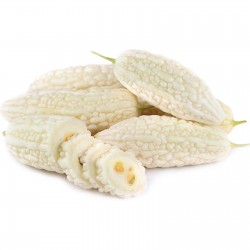
White Bitter Melon Seeds...
Cena
6,50 €
(SKU: V 7 B)
Seeds Gallery EU,
5/
5
<h2><strong>White Bitter Melon Seeds, Bitter Gourd (Momordica Charantia)</strong></h2>
<h2 class=""><span style="color: #fe0000;"><strong>Price per pack of 5, 10, 50, 100 seeds.</strong></span></h2>
<p>If the Balsam Pear did not exist a pharmaceutical company would invent it. In fact, there have been some ten studies published this past year about it, the latest as of this writing in February 2008 in the Journal of Food Biochemistry about its potential in diabetes treatment.</p>
<p>A very common, bitter vegetable in Asian cuisine, the Balsam Pear, Momordica charantia, is a natural drug store for diabetics and others. It’s not a pear at all but a fruiting gourd and vine that smells like an old, well-used gym shoe. Don’t say you weren’t warned.</p>
<p>The warty gourd is edible when green (and cooked) but turns toxic when orange ripe. It then splits characteristically into three parts, revealing red arils (fleshy seed covers). The ripe seeds inside the arils and orange flesh of the gourd are toxic and can make one violently lose fluids from both ends, and induce abortions. The red arils around the seeds, however, are edible. And notice this: The arils are 96% lycopene, which gives them their color. Just remember to spit out the seed from each aril.</p>
<p>M. charantia is found Connecticut south to Florida, west to Texas, also Puerto Rico and the Hawaiian Islands. Incidentally, the bitter melon has twice the potassium of bananas and is also rich in vitamins A and C.</p>
<p>The Latin genus name, Momordica, (mo-MOR-dee-ka) means “to bite,” and refers to the jagged edges of the leaves, which appear as if they have been bitten. Charantia (char-AN-tee-ah) the species’ name, comes from Greek meaning beautiful flower. It’s native to tropical regions of the world though no one knows where it came from originally. Gray’s four-inch-thick Manual of Botany, started in 1850 and revised in 1950, makes no mention of M. charantia in the United States but it is currently a serious crop weed in Florida and to 21 other crops around the world, bananas to soybeans. It’s a latecomer to Florida or Gray was in the dark about it. In the Amazon, and as far away as India, it is used very much by local populations for food and medicine. Apparently a dynamic chemical factory, the M. charantia is being tested for treatment against cancer — leukemia in particular — AIDS, as an analgesic, and to moderate insulin resistance. It is often called vegetable insulin. It does not increase insulin secretion but “speeds up carbohydrate use of the cells by affecting membrane lipids.” Seems like the smelly gym shoe hanging on the fence has a great future. But, it is not for everyone: Don’t eat the vegetable if you’re hypoglycemic or pregnant. In diabetics, it can lower blood sugar too effectively. It also reduces fertility in men and women. And, it contains vicine. That can cause favism in people who have a variant glucose-6-phosphate dehydrogenase. (I presume if you don’t know what that is you don’t have it. Favism is a severe reaction to fava beans and or their pollen. Occurs most often in Mediterranean men.)</p>
<p>Cultivated versions of the M. charantia, also called Bitter Gourd or Wild Balsam Apple, are found in most Asian markets, and they, too, smell like an old gym shoe. The odor, thankfully, almost all goes away when cooked, and the bitterness moderates, but does not go away. If you are not yet brave enough to pick your own, you can buy some or grow it yourself. There are many varieties and numerous recipes are on the Internet. The M. charantia is indeed bitter. Some cut up the vegetable and soak it in water, or salted water and or blanch it to reduce the bitterness.</p>
<p>While I have never seen an Oriental family picking M. charantia off local fences here in Florida, I have seen many Hispanic families doing so. Dr. Julia Morton, a plant professor in south Florida, says besides the green fruit, the young leaves when cooked and drained are also edible and nutritious, with iron, phosphorous, calcium, and vitamin C. I have never managed to get past the locker room bouquet to toss ‘em in a pot, and the fruit is just too bitter for me to enjoy. The ripe fruit pulp has been used as a soap substitute, which should give you some idea of the flavor. In India and Africa, the cooked leaves are canned like spinach. The fragrant flowers can be used as a seasoning when cooking.</p>
<p>Incidentally, if you have a glut of green Bitter Gourds, you can slice them, partially boil them with salted water, then dry them, sun, or otherwise. They will last for several months. You can then fry them and use as you like. Also, drinking the fresh bitter juice is recommended by some naturopaths. That ain’t going to be easy, it’s really bitter…. much easier to tell someone to do it than do it yourself.</p>
<p>REMEMBER: No part of the Momordica charantia is ever to be eaten raw, except for the red arils (and remember to spit the seeds out.) No part, other than the arils, is ever to be eaten when ripe, which is when it is turning from green to yellow to orange. Do not eat the yellow or orange fruit raw or cooked. It is toxic. Also, the green fruit is suspected in the poisoning of dogs and pigs.</p>
<p>Relatives: Momordica balsamina, which has longer spines on the fruit and can ripen to red, grows only in St. Lucie County in Florida and only a smattering of places in the southern U.S. M. balsamina fruit can be pickled or after soaking used as a cooked vegetable. Young shoots and tendrils are boiled as a green. The seeds are eaten. Momordica cochinchinensis produces a huge round fruit that is red when ripe. Young fruit boiled, not as bitter as M. charantia. Momordica dioica, small and roundish, is more esteemed than the rest. It is not bitter but sweet. Fruits, shoots, leaves, and roots are boiled for food. There are also at least seven commercial cultivars of the Momordica gourds</p>
<p>IDENTIFICATION: Momordica charantia: A slender, climbing annual vine to 18 feet with long-stalked leaves and yellow flowers where the leaf meets the stem. Young fruit emerald green turning to orange when ripe. At maturity, the fruit splits into three irregular parts that curl backward showing many reddish-brown or white seeds encased in scarlet arils.</p>
<p>TIME OF YEAR: Fruit, summer, and fall in warm climates, fall in northern climes.</p>
<p>ENVIRONMENT: Love to climb, found in hammocks, disturbed sites, turf, and ornamental landscapes, and citrus groves. It seems to be the most common vine on chain link fences in Florida.</p>
<p>METHOD OF PREPARATION: None of it ripe except the arils. Boiled green fruit (including seeds) leaves and shoots, boiled twice. Or, cut open and remove seeds and fiber and parboil. Ripe parts toxic are too bitter to eat. (An adult can swallow hole two ripe seed and not have much distress.) Young leaves and shoots are boiled and eaten as a potherb. Flowers used as a seasoning.</p>
<p>HERB BLURB</p>
<p>Herbalists say the charantia has long been used to treat diabetes and a host of other ailments from arthritis to jaundice.</p>
<script src="//cdn.public.n1ed.com/G3OMDFLT/widgets.js"></script>
V 7 B


